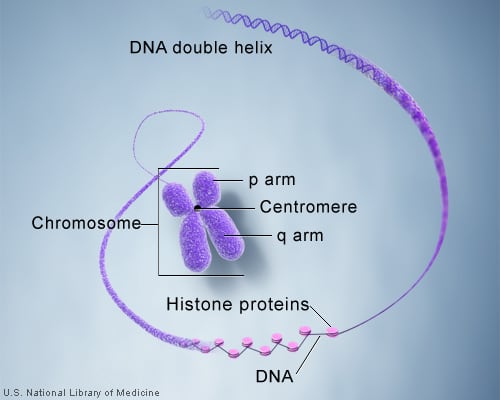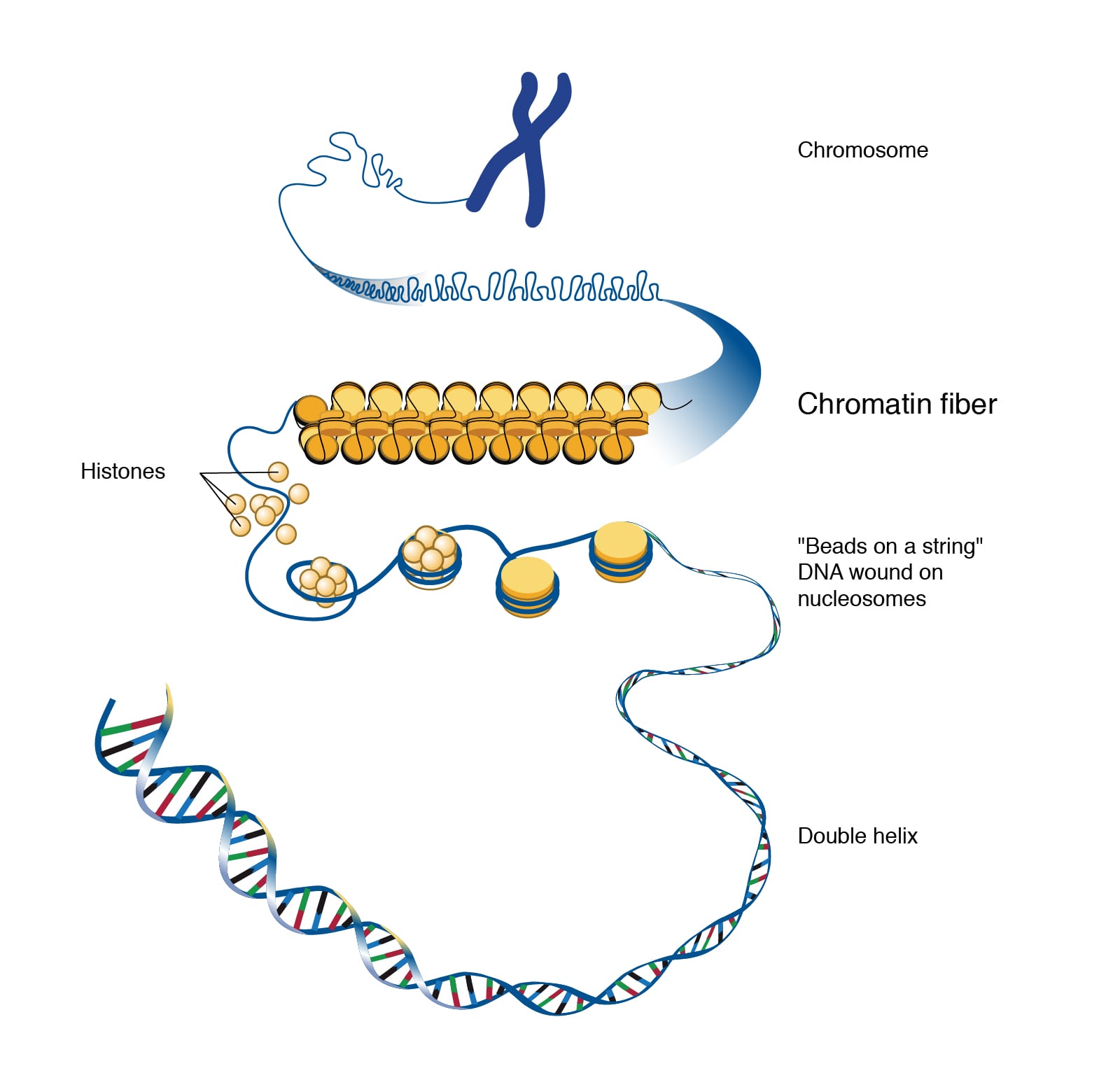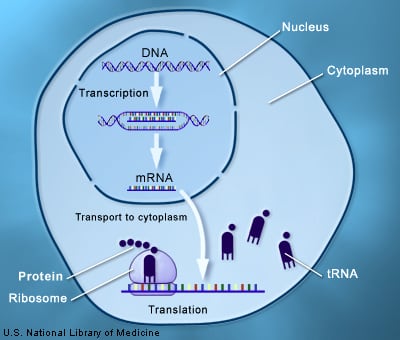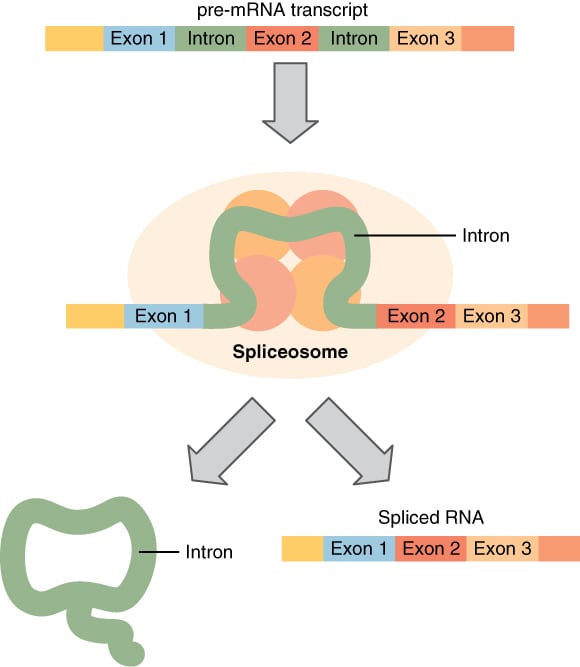Nucleus and nucleolus: The nucleus is surrounded by a double nuclear membrane. The outer membrane is continuous with the rough endoplasmic reticulum. Pores are present in the nuclear membrane. One or more darkly staining spherical bodies called the nucleoli are found inside the nucleus. These are the sites at which ribosomes are assembled. DNA associated with histone proteins forms chromatin.


Transcription: It is the process of transferring the genetic information in DNA to messenger RNA (mRNA). It begins by binding of RNA polymerase II at promoter regions of DNA. It leads to the formation of an initiation complex composed of RNA polymerase II and transcription factors.

TATA box: It is a promoter sequence located upstream of the start site. Transcription is initiated at the TATA box. It binds transcription factors such as TATA binding protein or TBP. CAAT box: It is located within the promoter region, upstream of the start site. It binds transcription factors like NF1. GC box: It is located upstream to the TATA box and binds transcription factors like SP 1 , WT and zinc-finger proteins.
RNA polymerase II synthesizes the mRNA strand as a primary transcript called heterogenous nuclear RNA or hnRNA, which contains both exons (coding sequences) and introns (non-coding sequences).

Alternative splicing is a physiological process that enables mRNA to direct synthesis of tissue specific protein variants (isoforms) that may have different cellular functions or properties. It occurs by rearranging the pattern of intron and exon elements that are joined by splicing to alter the mRNA coding sequence. Alternate splicing accounts for 25000 human protein-coding genes being able to generate >90,000 different proteins. Aberrant splicing is seen in many diseases including cancers and beta thalassemia.
Regulation of gene expression: Following factors are important:
i) Only euchromatin is accessible to RNA polymerase II and transcription factors. Heterochromatin is not transcriptionally active.
ii) The rate of binding of RNA polymerase is determined by transcription factor binding to TATA, CAAT and GC boxes in the promoter region.
iii) Enhancers are DNA sequences located upstream or downstream from the promoter region. They bind to regulatory elements like transcription factors and increase the rate of transcription.
iv) Silencers are DNA sequences that bind regulatory elements called repressors leading to decrease in transcription. They can be located either near or away from the promoter, including within the intron.
v) Steroids, growth factors and hormones affect transcription directly and indirectly.
Sign up for free to take 3 quiz questions on this topic